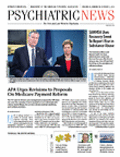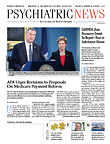Two new reports from the Substance Abuse and Mental Health Services Administration (SAMHSA) suggest that suicide attempts are increasing—particularly among certain age groups—and that a substantial number of these events are associated with prescription and over-the-counter drugs.
SAMHSA’s Drug Abuse Warning Network (DAWN), a public surveillance system that monitors drug-related emergency department (ED) hospital visits, conducted a comparative analysis on the number of visits to an ED for drug-related suicide attempts from 2005 to 2011.
“Suicide continues to take lives without regard to age, income, education, . . . race, or gender,” commented SAMHSA Administrator Pamela Hyde, J.D. “It is a growing risk in far too many segments of our society.”
The first report showed that ED visits for drug-related suicide attempts among individuals aged 12 and older increased by 51 percent, rising from 151,477 visits in 2005 to 228,227 in 2011. Middle-aged patients—those aged 45 to 63—had the largest increase in suicide-related ED visits, jumping from 28,802 in 2005 to 58,776 in 2011, a 104 percent increase. A 58 percent increase in ED visits was observed in young adults aged 18 to 29.
The second report from SAMHSA focused on identifying medications that may have contributed to the high prevalence of ED visits by middle-aged adults. The study results showed that of the ED visits made by this population in 2011, approximately 96 percent of those linked to medication overdoses involved nonmedical use of prescription drugs and over-the-counter medications. Medicines intended to treat anxiety and insomnia accounted for nearly half of all ED visits for medication-related suicide attempts among this age group, followed by pain relievers (29 percent) and antidepressants (22 percent).
“Along with the continued rise in rates of suicide in the U.S. reported by the [Centers for Disease Control and Prevention] for 2011, SAMHSA’s new report on the rise in emergency department visits from 2005 to 2011 due to drug-related suicide attempts is alarming,” said Christine Mourtier, M.D., chief medical officer for the American Foundation for Suicide Prevention.
Mourtier told Psychiatric News that the findings reported by SAMHSA also correlate with other analyses showing that middle-aged individuals have the highest rates for completed suicide in the United States. “[This] warrants a call to action. When we attend to suicide risk, as we have with youth and the elderly, we have been able to stem the tide and . . . even reduce suicide risk. It is time to pay close attention to middle-aged Americans . . . and know that we [as mental health professionals] do have the potential to save lives,” concluded Mourtier. ■
“Emergency Department Visits for Drug-Related Suicide Attempts Have Increased” is available
here. “Emergency Department Visits for Drug-Related Suicide Attempts Among Middle-Aged Adults Aged 45 to 64” can be accessed
here.


